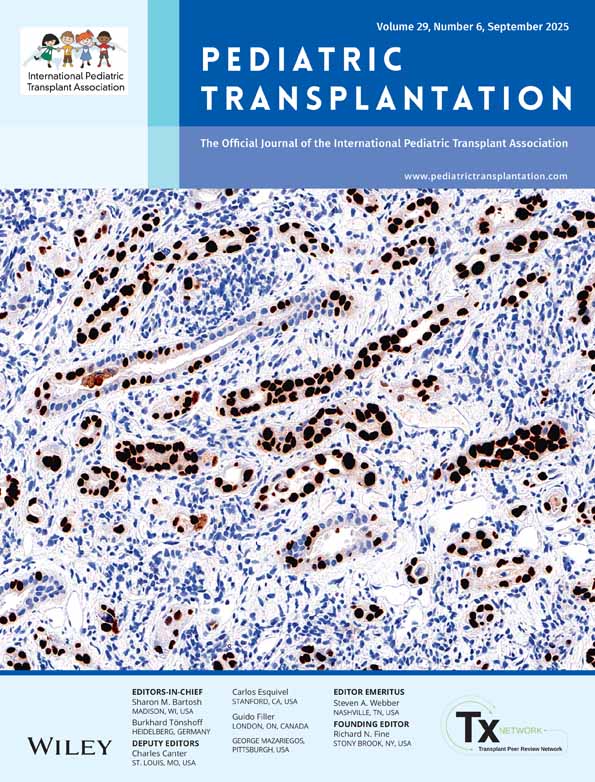Integral role of interventional radiology in the development of a pediatric liver transplantation program
Abstract
Abstract: The aim of this study was to examine the role of interventional radiology (IR) in the pretransplant evaluation of potential living-related liver transplantation (LRLT) donors and in the post-transplant management of pediatric liver transplant recipients. Medical records and procedural reports were reviewed of 12 potential donors and five recipients for left lateral segment liver transplants. Procedures performed by the IR Division, clinical indications, and complications were tabulated. Retrospective calculation of radiation exposure to the skin and gonads of the donors and recipients were made. Three-dimensional ultrasound (3D US) was used in all 12 potential donors to screen for the donor with the most appropriately sized left lateral segment. The four optimal donor candidates underwent contrast angiography in order to measure the diameter and screen for variant arterial supply to the left lateral segment. Pretransplantation, one recipient underwent mesenteric angiography with indirect portography to confirm thrombosis of the portal vein and to prove patency of the splenomesenteric venous confluence. Three children underwent LRLT and two children received split livers from cadaveric donors. Thirty-two IR procedures were performed after transplantation (Tx) in the four transplant survivors (one child died following Tx). These IR procedures included: ultrasound-guided percutaneous liver biopsy to evaluate the pathologic cause of liver dysfunction (seven); placement of nasal jejunal feeding tubes (three) or a peripherally inserted central catheter (four) for nutritional and pharmacologic support; large-volume diagnostic and therapeutic paracentesis (two) and thoracentesis (one); percutaneous catheter drainage of symptomatic large pleural effusions (two), large-volume chylous ascites (one) (with later drain removal [one]), and a large biloma (one); percutaneous biliary drain placement (three), biliary drain replacement (two), and balloon cholangioplasty (four) to relieve obstructive jaundice from biliary enteric anatomic strictures; and mesenteric arteriography (one) for suspected thrombosis of the hepatic artery. No complications occurred. Mean skin and gonadal radiation doses were 193 mGy and 27 mGy, respectively, for donors, and 164 mGy and 60 mGy, respectively, for recipients. Even in a program such as this, with a limited series of pediatric liver Txs, it is apparent that IR plays an integral role in optimizing the clinical outcome and use of resources. Specific benefits included: selection of optimal donors; accurate mapping of the donor and occasionally recipient hepatic vasculature; and, most importantly, providing relatively safe minimally invasive procedures for nutritional support and diagnosis and management of untoward events after Tx. When possible, ultrasound guidance should be used to avoid excessive cumulative fluoroscopic exposure to recipients.




